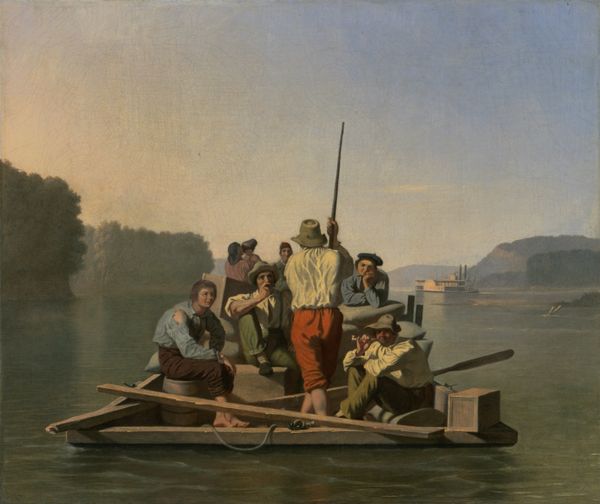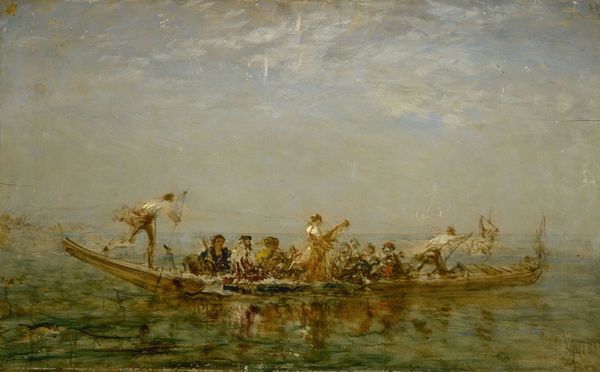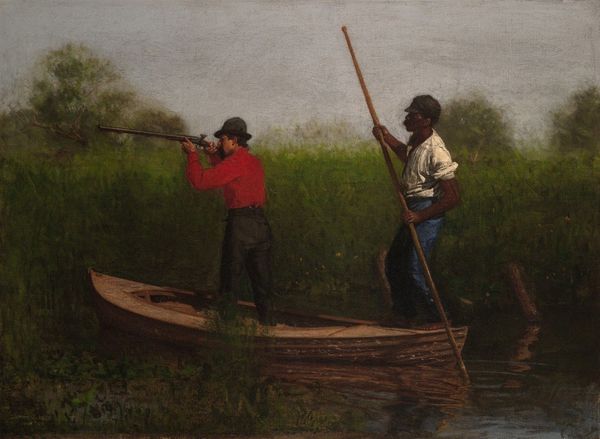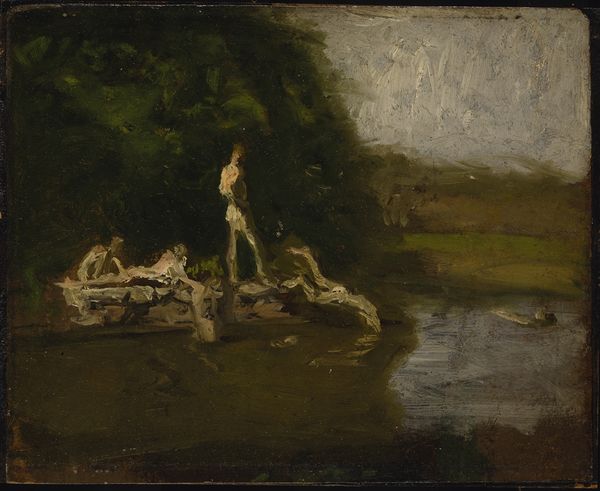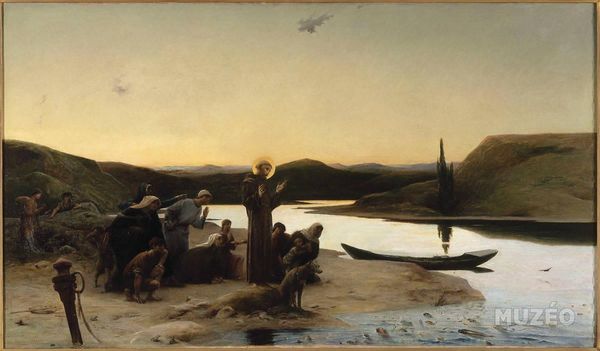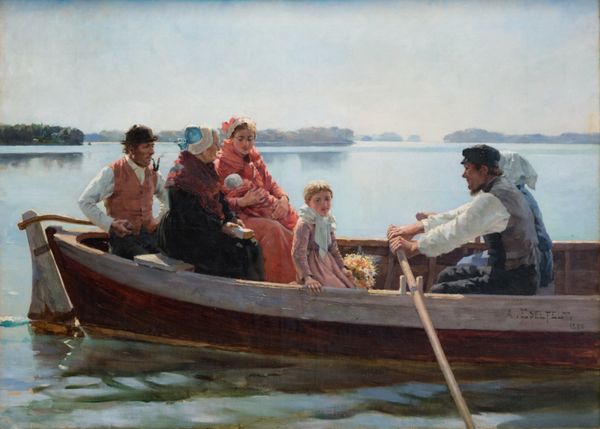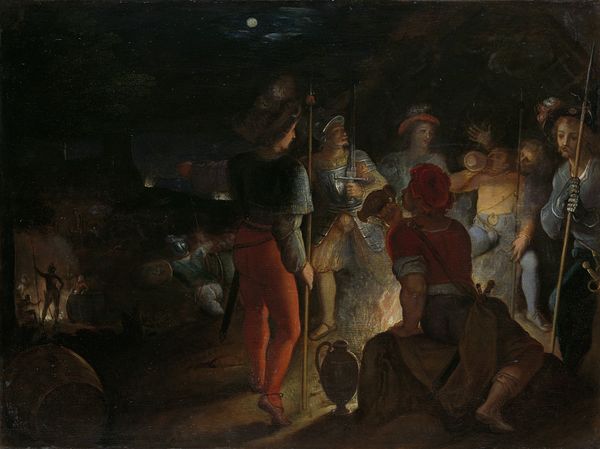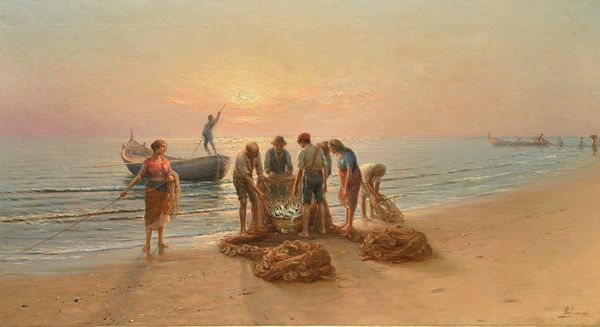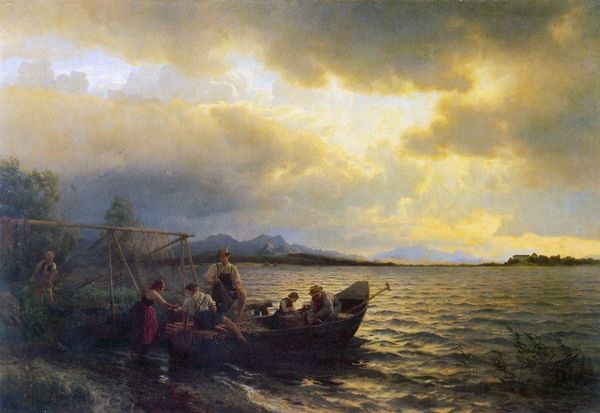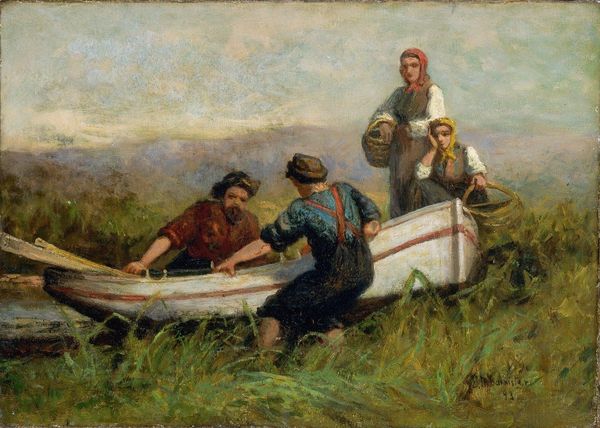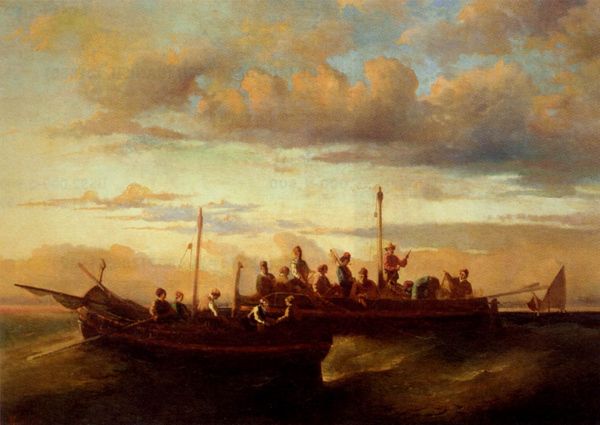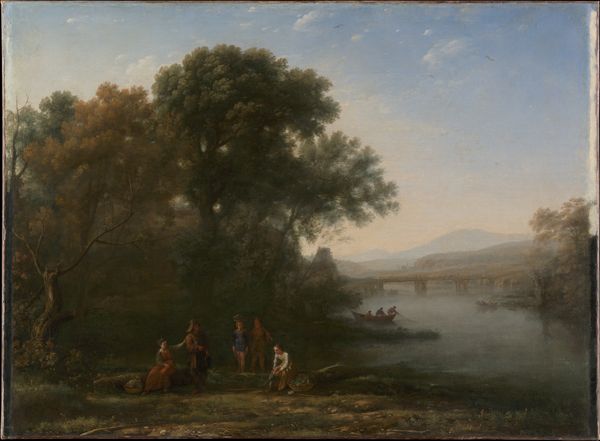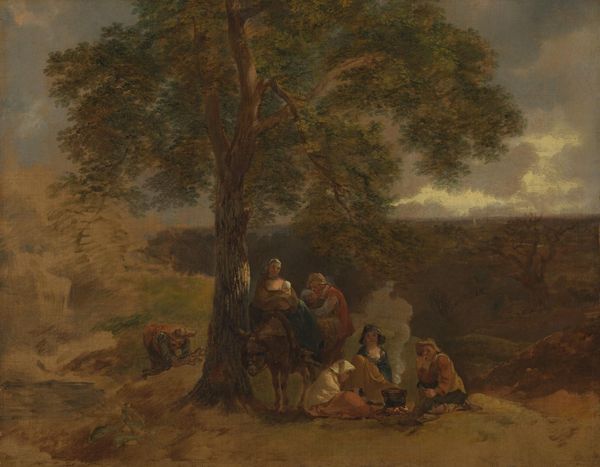
painting, oil-paint, impasto
#
gouache
#
narrative-art
#
painting
#
oil-paint
#
landscape
#
oil painting
#
impasto
#
romanticism
#
genre-painting
Dimensions: 135 x 193 cm
Copyright: Public domain
Ernest Hébert painted 'The Mal'aria' in the 19th century using oil on canvas. The artwork is evocative of social, cultural, and institutional histories, especially in Italy, the country where the artist lived. Hébert’s image creates meaning through visual codes, cultural references, and historical associations: the setting, the clothing, the mood, and the title all point to an encounter with disease and poverty. The term "mal'aria", or "bad air", was historically used in Italy to refer to the swamps and marshlands believed to be the source of malaria. The disease was rampant in the poorer regions of Italy during the 19th century, especially among rural workers and peasants. The scene depicts a group of people traveling by boat, with several figures who appear to be ill. The painting evokes a sense of melancholy and resignation, reflecting the harsh realities faced by those living in areas plagued by malaria. To understand this work better, we need to consider the social conditions that shaped artistic production, and the ways that institutions like museums, galleries, and schools shape the production and reception of art.
Comments
No comments
Be the first to comment and join the conversation on the ultimate creative platform.
